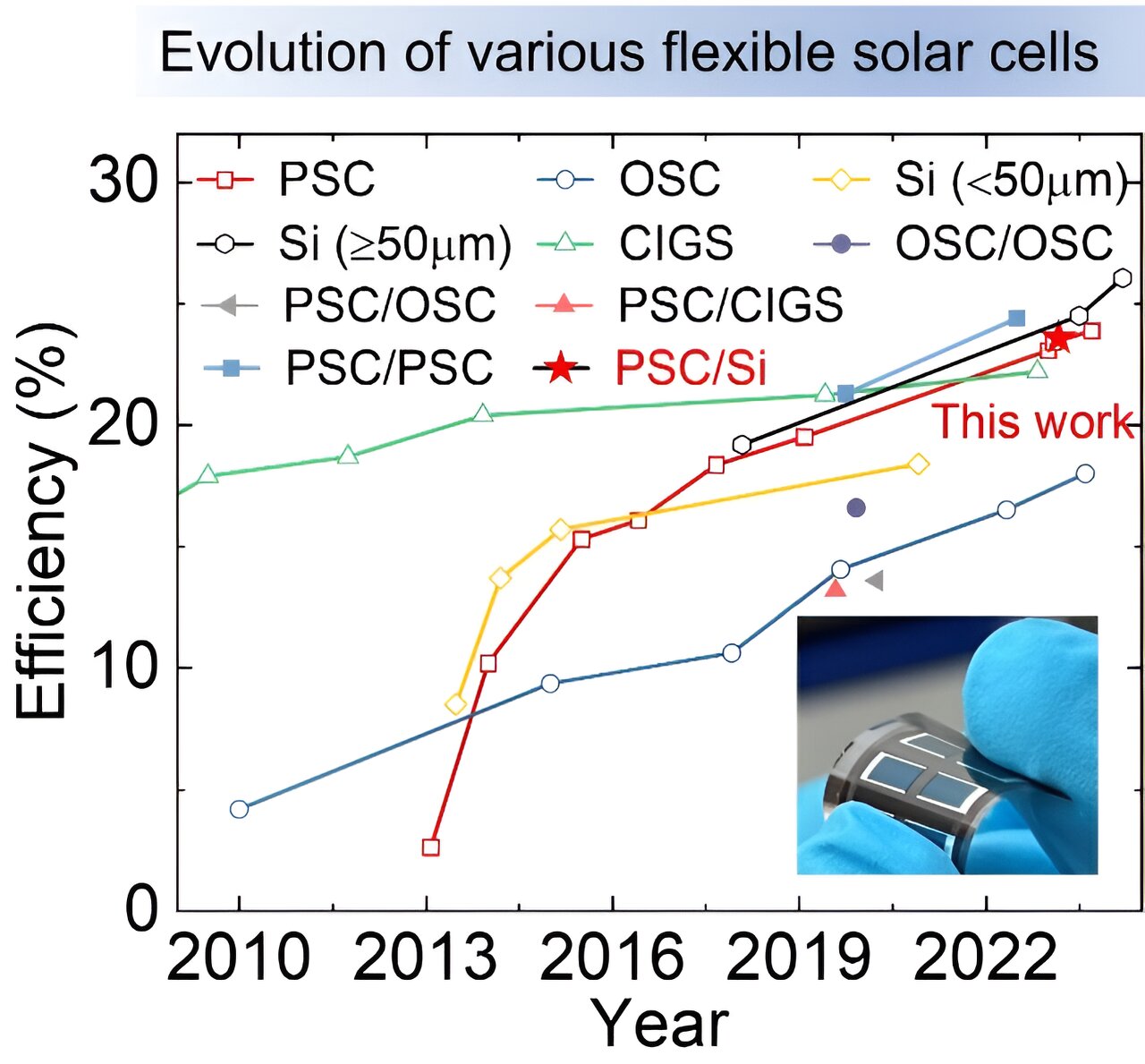
Despite the remarkable progress achieved in rigid perovskite/silicon tandem solar cells, with reported efficiencies reaching up to 33.9%, the utilization of flexible perovskite/silicon tandem solar cells has remained elusive. This challenge stems from the difficulty of enhancing light absorption in ultrathin silicon bottom cells while preserving their mechanical flexibility.
In their pioneering study, a research team successfully demonstrated the first flexible perovskite/silicon tandem solar cell based on ultrathin silicon, with a thickness of approximately 30 µm. The research is published in the journal Science Bulletin.
By reducing wafer thicknesses and adjusting the feature sizes of light-trapping textures, they significantly improved the flexibility of the silicon substrate without compromising light utilization. Additionally, by capping the perovskite top cells, they enhanced the mechanical durability of the device, thus addressing concerns related to fractures in the silicon surface.
The resulting flexible perovskite/silicon tandem solar cell achieved a certified stabilized efficiency of 22.8%, setting a record efficiency for flexible solar cells. Furthermore, with an exceptional power-to-weight ratio of 3.12 W g−1, the device promises high performance in a lightweight package. Remarkably, the flexible tandems exhibited outstanding bending durability, maintaining 98.2% of their initial performance even after undergoing 3,000 bending cycles at a radius of only 1 cm.
In conclusion, the breakthrough achieved by Professor Jichun Ye and his team represents a significant advancement in the development of flexible photovoltaic technology. Their research not only demonstrates the feasibility of flexible perovskite/silicon tandem solar cells but also opens up new avenues for the practical application of high-efficiency, lightweight solar cells in various fields.
This study is led by Dr. Xinlong Wang, Dr. Jingming Zheng, Dr. Zhiqin Ying, Prof. Xi Yang, and Prof. Ye from the Ningbo Institute of Materials Technology and Engineering, Chinese Academy of Sciences.
More information: Xinlong Wang et al, Ultrathin (∼30 µm) flexible monolithic perovskite/silicon tandem solar cell, Science Bulletin (2024). DOI: 10.1016/j.scib.2024.04.022
Citation: Novel flexible perovskite/silicon tandem solar cell achieves record efficiency (2024, June 5) retrieved 5 June 2024 from https://techxplore.com/news/2024-06-flexible-perovskitesilicon-tandem-solar-cell.html
This document is subject to copyright. Apart from any fair dealing for the purpose of private study or research, no part may be reproduced without the written permission. The content is provided for information purposes only.
